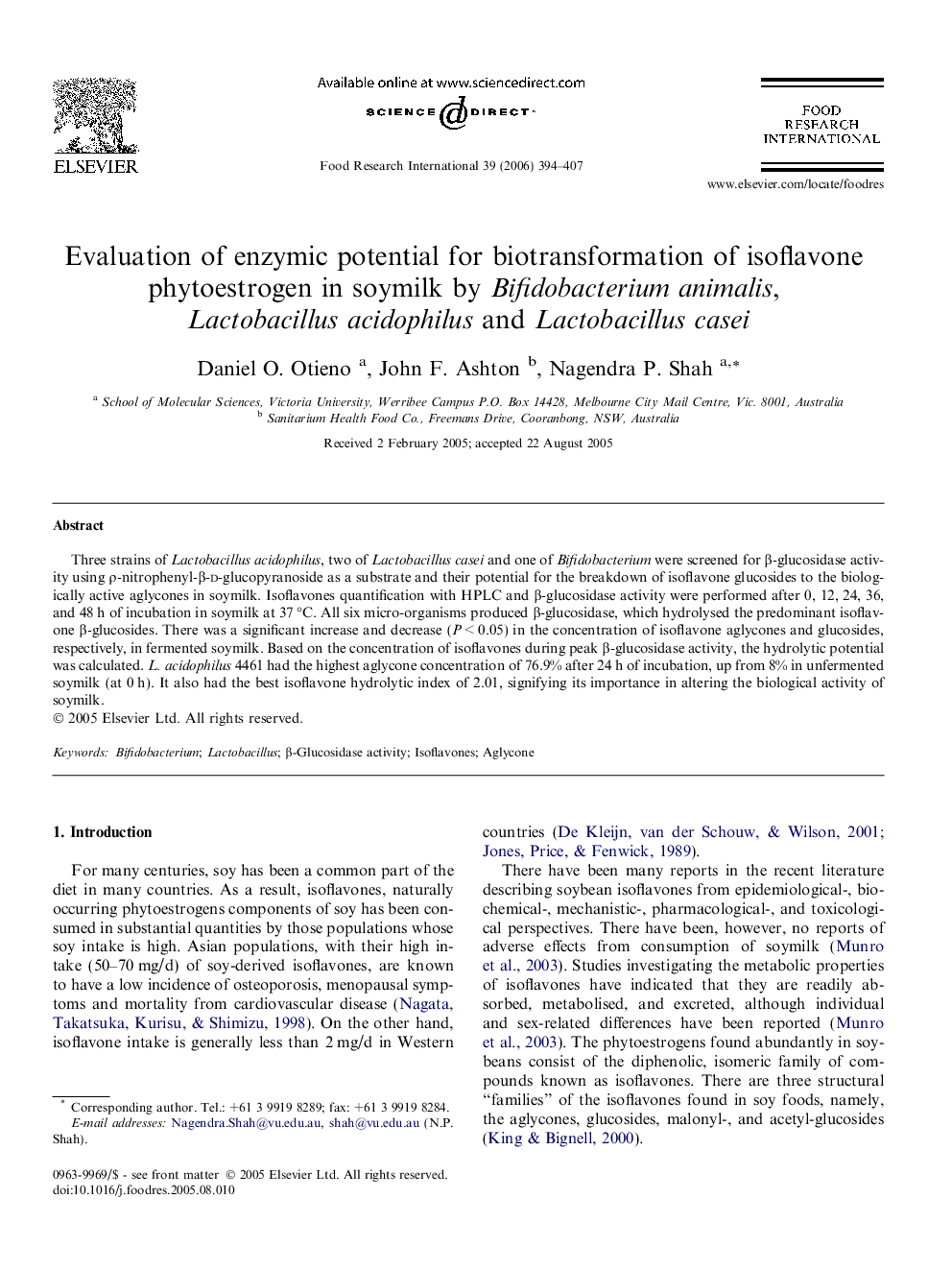| Article ID | Journal | Published Year | Pages | File Type |
|---|---|---|---|---|
| 4563202 | Food Research International | 2006 | 14 Pages |
Three strains of Lactobacillus acidophilus, two of Lactobacillus casei and one of Bifidobacterium were screened for β-glucosidase activity using ρ-nitrophenyl-β-d-glucopyranoside as a substrate and their potential for the breakdown of isoflavone glucosides to the biologically active aglycones in soymilk. Isoflavones quantification with HPLC and β-glucosidase activity were performed after 0, 12, 24, 36, and 48 h of incubation in soymilk at 37 °C. All six micro-organisms produced β-glucosidase, which hydrolysed the predominant isoflavone β-glucosides. There was a significant increase and decrease (P < 0.05) in the concentration of isoflavone aglycones and glucosides, respectively, in fermented soymilk. Based on the concentration of isoflavones during peak β-glucosidase activity, the hydrolytic potential was calculated. L. acidophilus 4461 had the highest aglycone concentration of 76.9% after 24 h of incubation, up from 8% in unfermented soymilk (at 0 h). It also had the best isoflavone hydrolytic index of 2.01, signifying its importance in altering the biological activity of soymilk.
